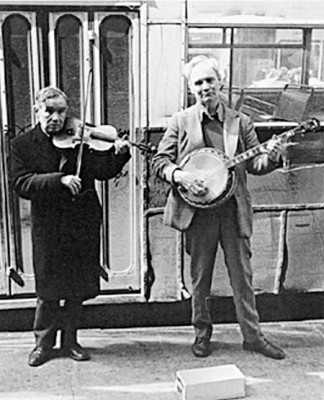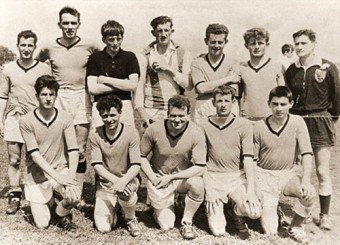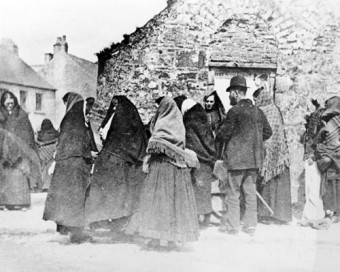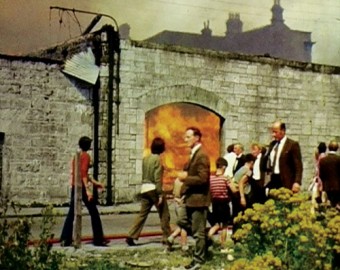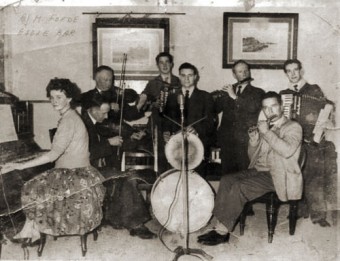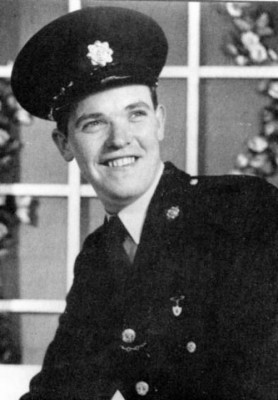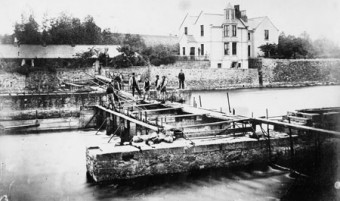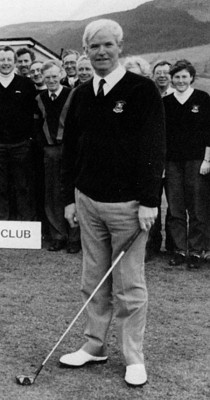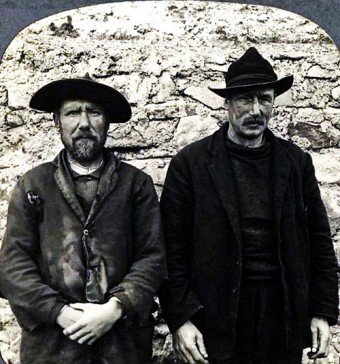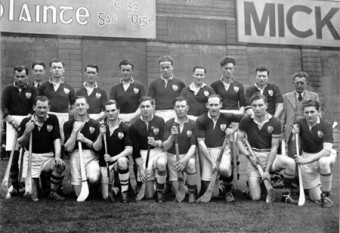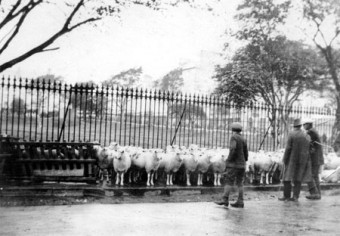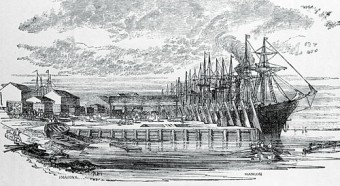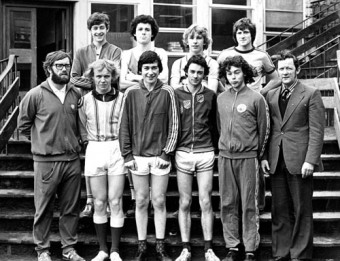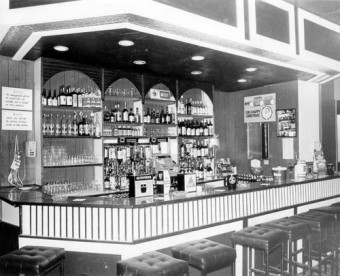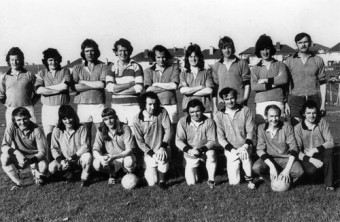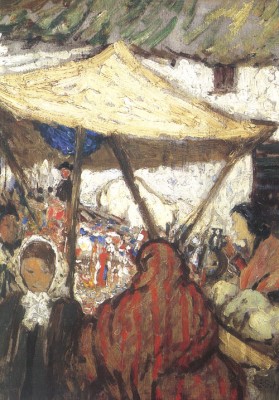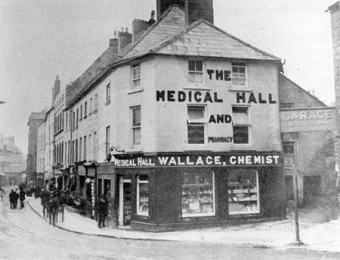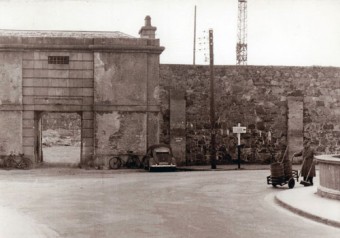The Dunne brothers busking in Galway
Thu, Jul 29, 2010
Busking is the practice of performing in public places for tips or gratuities. The earliest buskers in Galway were probably singers who would sing on the street, and then knock on doors in the hope of getting money or food. In the early 20th century, Johnny Doran and his family would move around playing in different places, including the races, and then in the evening outside the Imperial Hotel. Paddy Philbin, who later became a dancing master, would dance for him and they drew big crowds. Later came the Reaney brothers who played in various locations in Galway city and county.
Read more ...Fifty years of soccer in Mervue
Thu, Jul 22, 2010
In the mid fifties, the corporation began to build the houses that make up what we now know as Old Mervue. Many young families moved to the area, and for the children, the open green areas in from Plunkett Avenue, and between Clarke and McDonagh avenues, became their playgrounds. They played all kinds of games here… Gaelic football, athletics, and especially soccer. It was on these green spaces that many well-known footballers first developed and honed their skills.
Read more ...The egg and butter market, Woodquay
Thu, Jul 08, 2010
This photograph of that part of the Woodquay market at the corner with Eyre Street, was taken c 1890. It was here that country women gathered to sell their eggs and country butter. The market had a long tradition in Woodquay even at that time.
Read more ...Some Galway fires
Thu, Jun 24, 2010
The following are some of the fires that occurred in the city in the last century.
Read more ...The Galway sessions
Thu, Jun 17, 2010
Comhaltas Ceoltóirí Eireann in Galway was formed in the mid-fifties by schools inspector Pádraic Ó h-Eidhin and by Dr Galligan. Groups of musicians began to meet in St Patrick’s School, the Industrial School, and Mattie Forde’s Eagle Bar on the corner of Henry Street and William Street West. This represented the first stirrings of general interest in Irish traditional music in the city.
Read more ...In the end the Mayos didn’t say much
Thu, Jun 17, 2010
In the early 1990s the Mayos in Galway were getting so uppity that it was decided that action would be taken. It is believed that Seamus Keating, the legendary Galway city and county manager, and a Tipperary man to boot, was never slow in taking the hard decision. Exasperated by the controls exerted by the Mayos, their prestigious positions in all walks of life in the city, their swagger about the place, and the whingeing by the few Galwegians left on his staff at the unfairness of it all, one day he pressed the red button on his desk.
Read more ...The Queen’s Gap
Thu, Jun 10, 2010
Hardiman tells us, “There was from time immemorial a gap in the river called the Main Gap, through which small boats, sometimes with difficulty, passed up and down the river from the lake to the sea. This particular gap was always kept open from February to August, when all others were shut. The proprietors of the fishery, finding that it diminished the value of the weirs, caused it to be closed. This became the subject of legal contention, but it was finally decided that the gap should be, and it has ever since accordingly been, kept open.”
Read more ...A Saunders still lives in Woodford area
Thu, Jun 10, 2010
Following a recent series of Diary entries about the Woodford evictions in August 1886, and in particular the siege of ‘Saunder’s Fort’ I believed there was no descendant of the brave Saunders’ family living in the Woodford area today. I was very pleased to receive the following e-mail from Tom Page:
Thanks for your interesting articles on the Woodford evictions. My name is T J Page and I am a great-grandson of Thomas Saunders. My mother who is now 82 is his granddaughter and before she married my father Thomas Page she was Merlin Saunders - so there is still a living Saunders relative. She lives in Rossmore, near Woodford close to Lough Derg and 5 or 6 kilometres from the original site of the eviction of her grandfather Saunders Fort.
Read more ...Claddagh fishermen
Thu, May 06, 2010
There was a very good ethnological study on the fishermen of the Claddagh published in the Ulster Journal of Archaeology in 1854, which among other things stated that: “The people of the Claddagh are, in my opinion, purely Irish, of the most ancient Celtic type. The village at the present day is like any ordinary Irish village, and that it was a mud city when Rome was being founded, is more than probable. That the Claddagh men are not Spaniards any one might see at a glance; and it is astonishing to me how the theory of their Spanish origins could have kept ground for so long. A Spanish face may still be seen in and about Galway — once in a week or so; but it appears to me that the Claddagh, above all other people, had no intermarriage with Spaniards.
Read more ...Galway hurlers, 1949
Thu, Apr 29, 2010
There is no game on earth to compare with hurling, for speed, skill, artistry, movement, and athleticism. Fitness also plays a big part in the game. The Galway teams who played in the 1923 and 1924 finals spent an incredible almost 13 weeks together in Rockfield House, between Craughwell and Athenry. There, they lived like Trappist monks with a 6am reveille sounded by team manager and county board chairman, Tom Kenny, who arrived each dawn in his pony and trap from Craughwell. Out of bed and into a cold bath was the order of the day, and the first exercise was followed by a drink of cold water laced with ‘health salts’ before a solid hour’s toning up physical exercises supervised by trainer Jack Berry. Breakfast of the plainest food, with brown bread the major ingredient, followed at 10am. After an hour’s rest, the team and substitutes played and practised hurling with the free-takers perfecting their art with countless shots at goal from all distances and angles.
Read more ...Sheep fair, Eyre Square
Thu, Apr 01, 2010
Like most towns and cities in Ireland, Galway had a lot of fairs and markets. They were a vital part of life and the economy of the city, helping to feed the local population and provide much needed cash for farmers in the hinterland.
Read more ...Steam Wharf, Galway, c1850
Thu, Mar 18, 2010
A report on Galway Bay and Harbour published by the House of Commons in 1838 makes for interesting reading.
Read more ...Queen’s College Galway
Thu, Feb 25, 2010
In 1845, when Sir Robert Peel was in office, an act was passed providing for the establishment of three Queen’s colleges “In order to supply the want, which has long been felt in Ireland, of an improved academical education, equally accessible to all classes of the community without religious distinction”. Three faculties were established in each… arts, law, and physic (medicine). The colleges were strictly undenominational, and the professors were forbidden by the statutes to make any statement disrespectful to the religious convictions of their classes, or to introduce political or polemical subjects.
Read more ...Cross country champions from Móinín na gCíseach
Thu, Feb 11, 2010
Galway Community College in Móinín na gCíseach opened on September 1 1969. Jack Mahon was the first principal and among the staff were vice-principal Tom Gallagher, Philomena Burke, Joe Rooney, Peter Keady, Seán O’Donnell, Noel Carpenter, Joan Ryan, Myra Ryan, and Philip Cribbin. The aim was to create a caring atmosphere where students were and are encouraged and helped to develop their unique talents and gifts, by providing the academic and vocational skills that enable them to attain their maximum potential and participate fully as good citizens in society.
Read more ...The Castle Hotel
Thu, Jan 28, 2010
“An important addition to the accommodation for visitors in Galway is provided by the Castle Hotel. This hotel is conveniently situated in Lower Abbeygate Street, opposite the Pro-Cathedral. The proprietors claim that it is not only the newest of Galway’s hotels, but it is also the most comfortable and central tourist, family, and commercial hotel in the city, and with this contention, many who stayed there would fully agree. The Castle Hotel is within a few minutes walk from the railway station and docks. It is fully licensed. Parties are catered for.”
Read more ...A Galway Textile Printers XV
Thu, Jan 21, 2010
A challenge hurling match and a return game played between Galway Woollen Mills, Newtownsmyth, and the Post Office was the seed that led to the inauguration of an inter-factory hurling competition. A meeting was held in the CYMS in February 1954 and the following committee was elected: Jimmy O’Connor, GPO, chairman; Tommy Connellan, CIE, secretary; Tom Mooney, the Hat Factory; Sean Duggan, ESB; Sean O’Connor, Galway Woollen Mills; Jimmy Duggan, O’Gorman’s; Paddy Purcell, Sisk’s; Mick McGrath, AA Stuart’s; and Cronan Treacy, McDonoughs.
Read more ...The Claddagh market
Thu, Jan 14, 2010
Grace Henry was born in Aberdeen in 1868. She studied art in Paris where she worked with Andre Lhote. It was there she met the Irish artist Paul Henry, and they married in 1903. They returned to Ireland to paint. In 1912 they went on holiday to Achill Island, and ended up staying there for eight years. They both painted a lot on the island, but also in other areas in the west. Her work was very influenced by Paul in those years. Eventually they moved back to Dublin and, in the late 1920s, they separated. They continued to paint and each developed a major artistic reputation. Grace died in 1953.
Read more ...A corner of William Street, c1920
Thu, Jan 07, 2010
This photograph was originally published in Burrows Guide Book which was printed c1920. The main feature is The Medical Hall and Pharmacy which was owned by AP Wallace. To the right of that you can see the entrance to Higgins’ Garage (he was an agent for Ford cars), and to the right of that again, down a little alleyway, was the entrance to the Empire Theatre.
Read more ...Galway Gaol, April 1958
Thu, Dec 17, 2009
This photograph of the gaol was taken from the Salmon Weir Bridge in April 1958. It looks very bare with no traffic, and that high wall looks very imposing. The road sign we see was pointing to Clifden. The registration number on the Volkswagen car is ZM 3204. Note the bicycles parked at the entrance. The corporation worker with the barrow is ‘Janie’ Carr. As you can see from the crane and the pile of rubble inside the wall, the construction company Sisks had just begun to clear out the space for the building of the cathedral, which of course is on this site today.
Read more ...